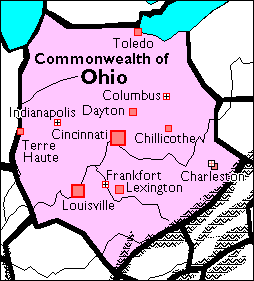
In medieval times, horse racing served a largely utilitarian purpose. Knights were always looking for best steeds, and sellers/breeders showed them off at the track in order to get the best prices. This is largely how it works across America in the new Middle Ages.
As a sport unto itself, it's most prominent along the Ohio River, where the relativity high urbanization allows for relatively more infrastructure and specialization, and the location of Louisville, home of the Kentucky Derby, the most prestigious equestrian event in the U.S. (That Indianapolis is so close to the Ohio River Valley means some elements of racing culture makes it in, but more along the lines Indycar than NASCAR. The South is far too decentralized to build stadiums and a middle class.) This is where the best horses in the Eastern U.S. are bred, and when people sell horses, they're not just selling horses, but their entire lines. This is where horse racing can be an actual profession. In the industrial era, jockeys were slight of build to give the horse an edge, but that's not the case here since the ability to carry weight is extremely important in a horse.
Chariot racing has not really caught on because it died out in the western world before the Medieval Era ever really started, and Americans try and breed the largest possible horses, which can be cumbersome when tied to chariots. A few Emperors in California and even Mexico have experimented with reintroducing chariots, but there is no real continuity with chariot-building cultures, so they're not particularly refined.
